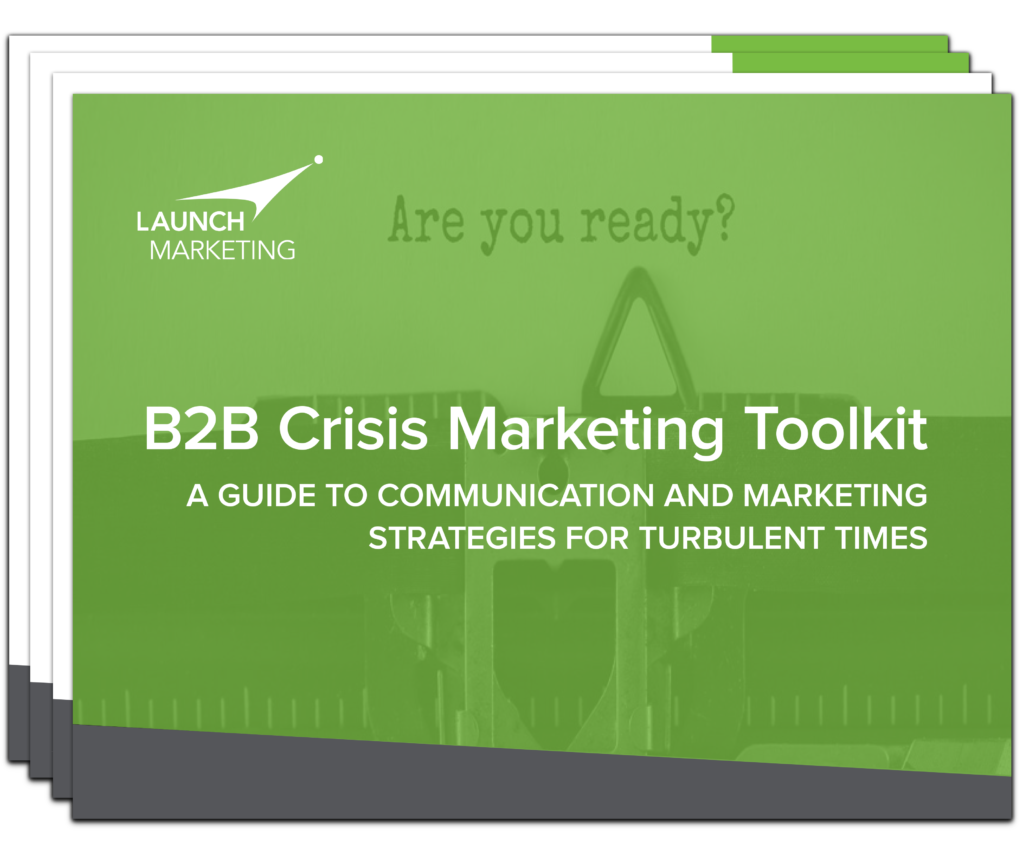
“Sometimes the things we can’t change end up changing us.” This unattributed quote feels particularly relevant as we all are in the midst of change that we didn’t anticipate for 2020. Yet, what is up to our discretion is how we react and respond to this change. B2B buyers and prospect audiences have already enacted significant changes to their daily operations and functions, which means B2B companies must shift in kind to mirror their new normal. While change can seem particularly daunting when it involves business practices that may have guided a company for years, focusing in on the highest-level buyer expectations’ shifts can simplify the adjustments that should be made.
Below, we highlight several buyer expectation shifts that have emerged in recent weeks and what they mean for B2B organizations, outlining key questions that leaders and teams should be asking.
Disruption-driven B2B Buyer Shifts
Going Online
People still want to connect, but in-person experiences for most are not an option for now. As a result, the virtual world is quickly taking on a life of its own. As events, tools and meetings all move online, buyers are engaging via screens for larger portions of the day. The internet certainly isn’t new, but most people are accustomed to a blend of in-person meetings and independent work throughout the day. Connecting on platforms like Zoom, once reserved for dispersed teams, is now ubiquitous. And this digital presence applies to all device types. According to GlobalWebIndex, 40% of US adults are spending more time on their smartphones since the coronavirus outbreak began.
As online information intake and engagement sharply increases, digital experiences must be refined to support these shifts in a buyer’s journey. This can prove especially challenging for B2B companies where purchases are less transactional and e-commerce oriented and are driven more by relationship building. Instead of pushing individuals to purchase, these organizations need to remove points of friction throughout the digital experience and nurture prospect and customer relationships with the right information at the right times.
Key questions for optimizing digital experiences:
- How can our website and online experiences be more intuitive and complimentary for buyers and their needs?
- What are the differences across our mobile and desktop experiences? Where can improvements be made in each path?
- How accessible are our digital resources (blogs, whitepapers, etc.) and to what extent do these assets reflect current customer pain points?
Working from Home
Prior to the COVID-19 outbreak, only 3.6% of the US workforce worked part-time or more from home. Contrast that with the March 2020 Gartner Report that noted “88% of organizations have encouraged or required their employees to work from home.” This seismic shift is particularly poignant for B2B markets, spaces that aren’t traditionally oriented to individualized buying decisions and “home shopping.”
At B2B companies, typically 1 to 6 people are involved in a purchase decision and 44% of companies have formal groups review B2B purchases. With these decision-making teams now dispersed and even more reliant on digital communication, the B2B purchasing process can be elongated, even beyond the 61% increase in length that already occurred between 2018 and 2019.
Now more than ever, B2B companies must sharpen focus on their value proposition and ability to address rapidly changing pain points. What makes one’s offering needed and value-added in the context of the current climate? Reflect this value in every element of messaging and outreach. B2B audiences may be experiencing sudden changes that affect the way they’re buying, but that alone does not negate the need for one’s offerings.
Key questions for assessing and adjusting marketing approaches to work-from-home audiences may include:
- How does the current climate affect the value and utility my product, service, or solution provides to customers?
- Does our messaging strike the right tone and address current pain points that our prospects and customers are experiencing?
- How do the tactics and times that we engage with audiences need to adjust to better the work-from-home environment?
Thinking About Spending
As we all know too well, the pandemic has triggered especially severe impacts to the stock market, unemployment rates, and virtually complete stoppages to industries such as travel. This has also dramatically altered spending practices, compelling leaders and businesses to think more critically and judiciously about their purchases.
Most B2B purchases entail relatively higher costs as they commonly address a company-wide pain point. This doesn’t necessarily imply that businesses should slash or even modestly lower prices, but that adjustments to the buying process itself may be needed to ensure that potential customers’ changed purchasing abilities are considered. Adjustments should also be made so that purchasers don’t feel pushed. B2B buyers want options and information that moves the process forward at their pace and in an intuitive manner.
Key questions for optimizing the purchase process may include:
- How can our sales cycle be shortened or streamlined?
- How can the biggest barriers to near-term buying decisions be alleviated?
- What aspects of our buyer journeys have changed and how must we change to support them?
Buyer expectations will undoubtedly continue to shift as the global pandemic persists. Evolving long-term buyer habits are likely to emerge as well, requiring more permanent changes in sales, marketing and B2B business development. Organizations should embrace the control they have, thinking critically and asking the right questions to adjust for a future that results in sustainable business success.

There are no comments